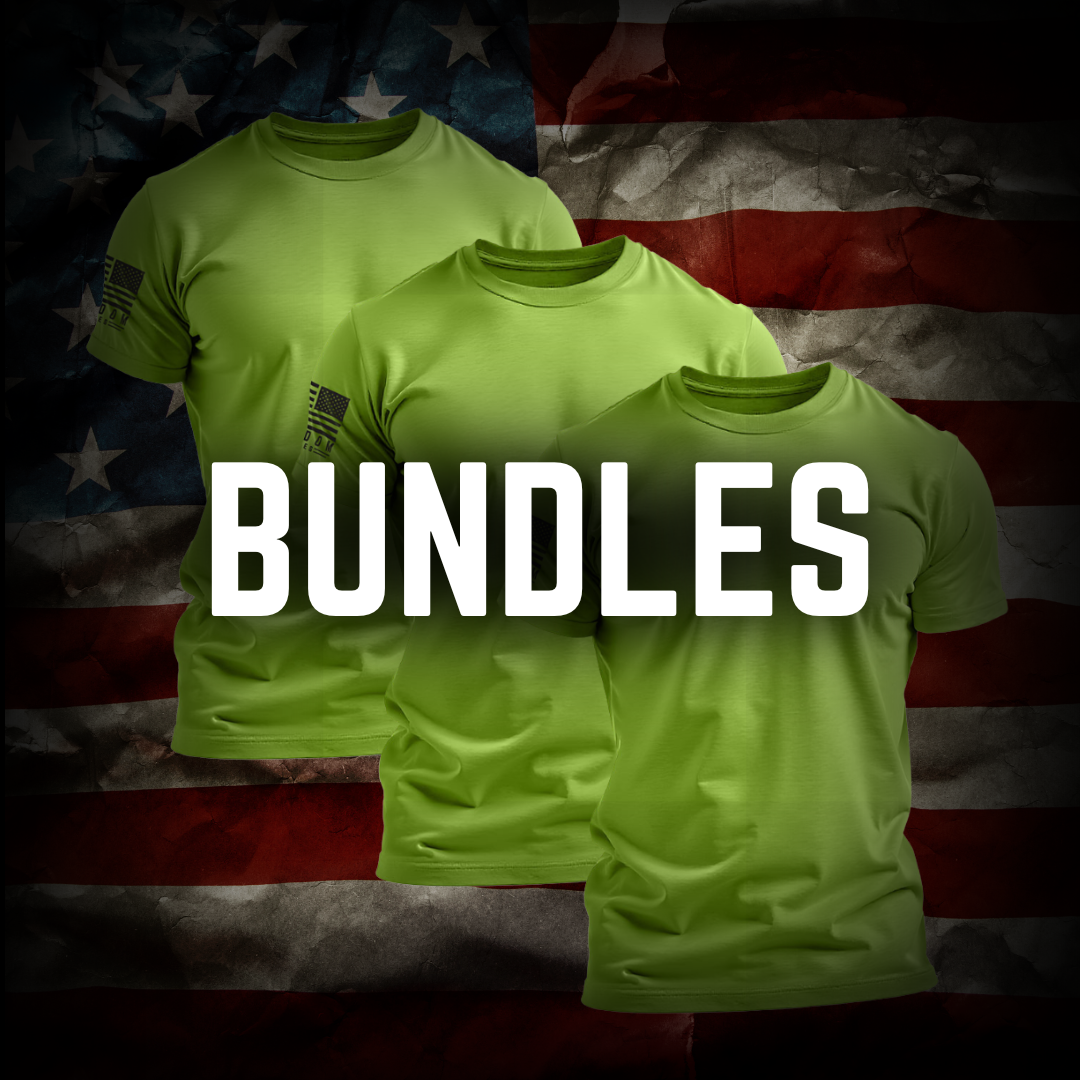If preparedness and the ability to respond to an emergency matter to you, you likely know why building a bug-out bag is critical. The role of the bug-out bag is to serve as a survival kit containing all the essential items you need to survive for 72 hours at the minimum. It should include more supplies than your everyday carry (EDC) setup without being overly heavy with long-term survival items.
However, it can be challenging to pick out your supplies and balance them with the need to keep the bag lightweight and handy. Discover the top 10 best items for your bug-out bag to meet every survival need in any emergency.
Before Picking Bug-Out Items, Choose a Good Bug-Out Bag
While knowing what to fill your bug-out bag (BOB) with is essential in any emergency plan, having a suitable backpack to carry them in can support your efforts.
The role of the bug-out bag is to let you carry all the items you’ll need to survive for a few days, typically 72 hours (3 days), with no other resources at your disposal. When choosing a backpack to use as a BOB, you must ensure it is lightweight, durable, and high-capacity.
Choose a Lightweight Bag
While selecting the lightest gear possible is a crucial part of keeping the bag lightweight, don’t forget the bags themselves contribute to the carry weight. If your backpack feels too large and bulky to carry all day comfortably, it may be a good idea to size it down, even if you lose in carrying capacity.
Ensure your backpack is correctly sized by weighing it when filled with bug-out bag essentials. Compare the results to your body weight and fitness level: a filled BOB should weigh no more than 10% to 20% of your body weight. The fitter you are, the higher your safe percentage.
For example, if you are 190 lbs. and in excellent shape, you should aim for no more than 38 lbs. of gear, bag included.
Select a Bag Made of Durable Materials
Your bug-out bag must be created from durable materials resistant to the elements and able to withstand survival situations. The last thing you need when you grab the bag is for it to tear or rip when lifting it or handling it roughly.
Look for backpacks made of high-durability fabrics, such as high-denier ballistic nylon, and check for durability features, such as reinforced stitching. Ensure the bag’s materials are water-resistant, as it helps protect the contents from exposure to rainwater. Depending on your location, consider fitting a rain cover to ensure your bag and its contents stay dry.
Pick a Bag With High Carrying Capacity
A quality bug-out backpack should have enough space to carry everything you need to survive 72 hours or more. A complete bug-out bag should fit every essential item on our list and leave you with some space to spare for additional supplies.
Typical BOBs usually feature a nominal carrying capacity of about 30 to 50 liters, split between multiple compartments for organizing your gear. Remember that the higher a backpack’s carrying capacity, the heavier the bag due to being larger and made of more materials.
The Top 10 Items Every BOB Needs
The supplies in your bug-out bag should help you meet a specific survival need and help you stay alive. While your particular needs may vary depending on local conditions, some needs and associated survival supplies are essential to every kit.
Shelter: Survival Tent
The first and most critical of survival needs is shelter. While the essential function of shelter is to provide you with an area to protect yourself from elements and weather, it is also a vital building block for meeting your other needs and using your other supplies.
For instance, the location you choose to establish your shelter is where you’ll build a campfire, cook and eat food, unroll your sleeping bag, and keep watch for potential threats.
The best survival shelter is a dedicated survival tent. Pick a lightweight model with quick setup features, ensuring it is easy to carry, deploy and fold back into your backpack, giving you easy mobility. The materials should be fully windproof and waterproof.
The Go Time Gear Life Tent is an excellent example of a quality one-person survival tent meeting all requirements.
Sizing is up to personal preference; if you travel alone, a one-person survival tent is all you need. If you’re with a group, you have two options: Ensure all group members carry their own one-person tents or designate one member to carry a single multi-person tent.
Fire: Fire-Starter Kit
Access to fire is another crucial survival need. Fire provides multiple potentially life-saving benefits in an emergency: warmth, light, and a convenient source of heat to cook food. Studies have shown campfires even have psychological benefits, helping survivors relax by decreasing blood pressure.
To make a campfire, you need a reliable way to start a fire. Although matches and lighters are an option, they may not always light, especially under harsh weather conditions.
A quality ferrocerium rod kit such as the Holtzman Heavy Duty Ferro Kit is better suited for survival conditions. These kits are easy to pack, produce plenty of sparks for lighting tinder and firewood, last multiple thousands of strikes, and function even when wet.
Food: Calorie-Dense Survival Food
While a bug-out bag should have supplies to let you survive emergencies for up to 72 hours, packing six meals’ worth of food can be challenging. Most typical household food supplies occupy valuable space in your backpack, and even a military field ration can be relatively heavy. For instance, a single MRE weighs 18 to 26 ounces; six are 6.75 to 9.75 lbs.
The best bug-out food should be the most space-efficient and provide the most calories per ounce. Good examples of nutrition-rich, space-efficient survival food include the following:
- Pemmican
- Beef jerky
- Energy gel
- Peanut butter
- Nuts and seeds (almonds, cashews, sunflower seeds)
- Emergency survival bars
- Trail mix
- Snack bars
Water: Canteen with Water Filtration System
While water is vital for life, it is also incompressible, making it one of the heaviest and bulkiest essential survival supplies. Consequently, knowing how to locate and draw water from the nearest source is critical.
Instead of storing and packing bottled water, pack a canteen with an integrated water filtration system, and fill them using local bodies of water to keep yourself hydrated.
Ensure the water filters are long-lasting and easily replaceable. Pack at least one spare filter if your current one is at the end of its life.
Quality water filtration systems like the Seychelle Advanced Canteen Water Filter can remove heavy metals, harmful chemicals, chlorine, and many other contaminants.

Medical: First-Aid Kit
There’s no way to tell what might happen while bugging out, especially if you’re escaping a violent emergency. A first-aid kit is critical to help you treat injuries on the field, whether your own or other people’s.
Pack a lightweight, comprehensive first-aid kit (FAK) with supplies to address cuts, scrapes, bruises, and more severe injuries, such as trauma wounds, burns, or diseases and infections. If you have prescriptions or specific medical needs, you can also use your FAK to carry them.
Consider keeping a paracord bracelet in your FAK for emergency wound treatment. For example, you can use a paracord tied in a square knot to secure dressing to a wound.
Most items in a FAK require training to employ efficiently. Consider enrolling in a first-aid class to receive appropriate training before using one.
Light: Survival Flashlight
At first glance, having tools to see in the dark may seem optional, especially in the age of smartphones with integrated flashlights. However, smartphone batteries drain quickly and aren’t suitable for outdoor use.
Instead, choose a dedicated camping or survival flashlight. While most modern flashlights feature LED lamps and multiple lighting settings, ensure its maximum output (measured in Lumens) is sufficient to conduct night-time tasks.
A good example of a survival flashlight is the Fenix PD35 V3.0, a 1700-lumen, 6-mode pocket flashlight capable of using either a rechargeable battery or disposable CR123As. Its durable casing is IP68 dustproof and waterproof, and it can illuminate at distances exceeding 1,100 feet.
Tool: Survival Knife (or Multi-Tool)
The knife is one of the most versatile tools, particularly in an emergency. A robust survival knife lets you perform many critical tasks on the field: slicing food, cutting rope, making firewood, building a shelter, or doing bushcraft activities.
In a pinch, your survival knife can also become a self-defense weapon, a hammering or prying tool, or an anchoring stake. With the right skills, you can also use it as an emergency first-aid tool. For example, you can use it to cut duct tape into improvised bandages.
You can also wear a survival dog tag as a practical tool. Freedom Fatigues offers a dog tag necklace with a removable arrowhead-shaped knife made of 304 steel. You can use the arrowhead as a handheld cutting tool. Its sharp gut hook and serrated edge are ideal for cleaning and scraping game during a survival situation.
Sleep: Survival Sleeping Bag
No 72-hour BOB is complete without an appropriate survival sleeping bag. The right size, model, and materials can help you get proper rest, even in emergencies.
Verify that your bag is a one-person model designed to fit your height and build to keep its weight and volume down. Check your sleeping bag’s temperature rating to ensure it is appropriate for the climate in your area.
If you live in a colder climate or plan to bug out in a high-altitude location, consider a sleeping bag one temperature rating below what you’d usually choose.
Clothing: Bug-Out Clothes
Although often overlooked, having access to fresh sets of clothes is crucial to replace any currently worn articles if they get damp, dirty, or damaged while bugging out.
At the minimum, pack a spare change of underwear, socks, and shirts. Dirty clothes and underwear absorb and collect sweat, dirt, and bacteria over time, which can carry other pathogens and increase the risk of sickness. Dry and clean socks are essential to keep your feet dry and minimize the risk of trench foot.
If you have space to spare, pack additional accessories appropriate for the geography. For example, consider packing a sun hat in warmer climates or gloves and snow shoes for colder regions.
Cooking: Mess Kit
While a campfire makes it easier to cook and sustain yourself, a camping-style mess kit provides many advantages for survival that can provide redundancy with your other equipment.
Besides using it for cooking food, a quality survival mess kit can help you boil water, providing an additional way to produce drinkable water. You can also use it as a container for extra supplies or a receptacle for building a small, low-profile campfire or fire pit.
Preparedness and Patriotic Apparel with Freedom Fatigues
Freedom Fatigues is committed to helping patriotic American citizens by providing helpful preparedness information and high-quality patriotic shirts and apparel.
Every purchase you make at Freedom Fatigues helps us give back to America’s heroes. A percentage of our sales goes to veteran support organizations, such as Mission 22 and Blue H.E.L.P.




